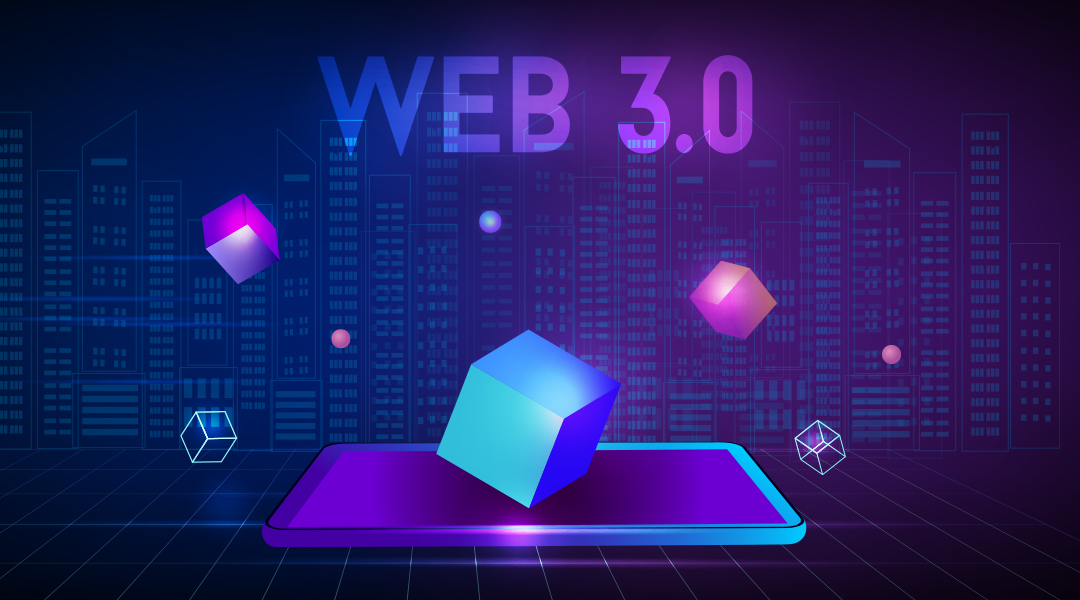Web3: The Internet’s Future – A Comprehensive Guide
The Internet has grown dramatically over the years, with each period delivering revolutionary advances. After Web1, which consisted of static web pages, and Web2, which featured dynamic and interactive information, we are now on the verge of a new digital revolution: Web3. In this blog, we will look at the notion of Web3, its important features, and the possible impact it could have on numerous businesses and daily life.
What is Web3?
Web3 is the Internet’s third generation, based on decentralisation, blockchain technology, and user-centric concepts. Web3 seeks to provide people more control over their data and online experiences, increasing trust, transparency, and collaboration in the digital world. Web3’s core goal is to eliminate middlemen and establish a peer-to-peer network, eliminating dependency on centralised authorities.
Web3’s Key Features:
Decentralisation: Web3 is built on decentralised networks, which disperse data and applications over several nodes, eliminating single points of failure and boosting resilience to cyberattacks.
Blockchain Technology: The driving factor behind Web3 is blockchain technology, which provides a secure and immutable ledger for recording transactions and interactions. It ensures transparency, trust, and resistance to censorship.
Smart Contracts: Smart contracts are self-executing agreements in which the contents of the agreement are directly encoded into code. They run automatically when certain circumstances are satisfied, eliminating the need for intermediaries in many operations.
Cryptocurrencies and Tokens: Web3 introduces its native digital money and tokens, which permit crowdsourcing, frictionless and borderless transactions, and novel business models.
Identification Management: Web3 focuses on user-centric identification solutions, allowing users to maintain control over their personal information and privacy while interacting online.
Applications and Use Cases for Web3:
Decentralised Finance (DeFi): DeFi is a notable Web3 application that promises to recreate traditional financial services without the use of intermediaries. Through smart contracts, DeFi platforms enable lending, borrowing, and trading of digital assets.
Non-fungible Tokens (NFTs): NFTs are one-of-a-kind digital assets that reflect ownership of art, collectibles, virtual real estate, and other things. Web3 offers a safe and transparent environment for the creation, ownership, and trading of NFTs.
Supply Chain Management: Web3 has the potential to revolutionise supply chain management by enabling real-time tracking and transparency, lowering fraud, and guaranteeing product authenticity.
Decentralised Social Networks: Web3 enables social media platforms that put user privacy first and give people ownership of their data, upending the established business model of data exploitation by tech giants.
Gaming and Virtual Reality: Web3 enables the establishment of decentralised gaming platforms and virtual realities, allowing users to own in-game assets and engage in play-to-earn ecosystems.
Opportunities and Challenges
While Web3 has amazing potential, it also has problems. As blockchain networks struggle to manage enormous transaction volumes in real-time, scalability remains a key barrier. Furthermore, regulatory uncertainty and potential misapplication of decentralised systems raise legal and security risks.
Web3, on the other hand, offers several opportunities. It has the potential to democratise financial services access, generate new revenue streams for content creators, and empower individuals in data-driven economies.
Impact on Businesses
Finance: Web3’s DeFi ecosystem has the potential to disrupt established banking and investing paradigms by bringing financial services to the unbanked and underbanked.
Art & Entertainment: NFTs provide new avenues for artists and creators to monetise their work, while decentralised platforms disrupt the distribution and income patterns of the entertainment sector.
Healthcare: Web3 can improve data interoperability and security in healthcare by allowing patients to securely control and share their medical records.
Education: Web3 technologies have the potential to revolutionise education by offering decentralised and verified credentials, personalised learning experiences, and worldwide cooperation among students and educators.
Conclusion
Web3 represents a major shift in our relationship with the Internet. Web3 has the ability to revolutionise different industries by utilising decentralisation, blockchain technology, and user-centric principles, fostering transparency, trust, and empowerment. While there are limitations, the prospects for innovation and beneficial influence are enormous. Embracing Web3 as we navigate this new period can pave the path for a more inclusive, safe, and decentralised digital future.


